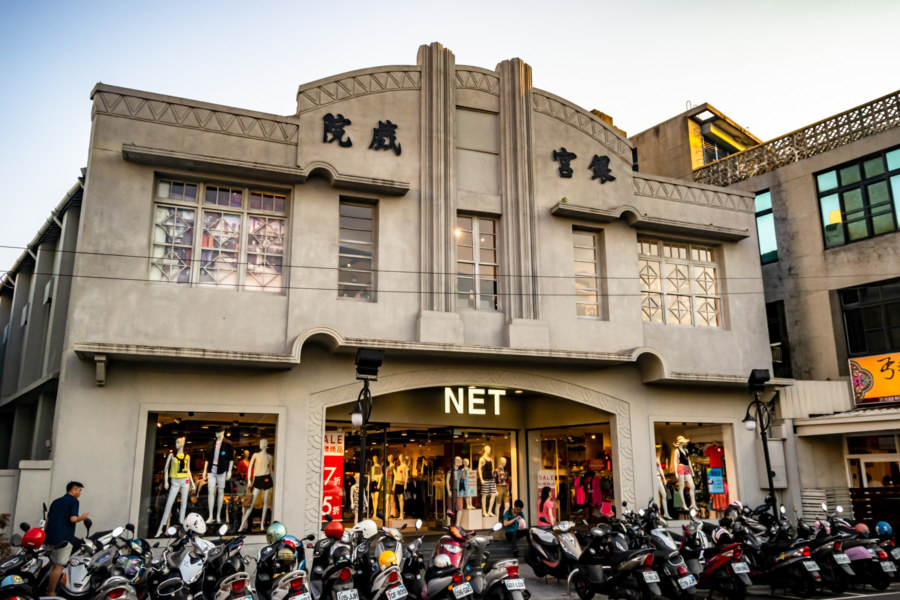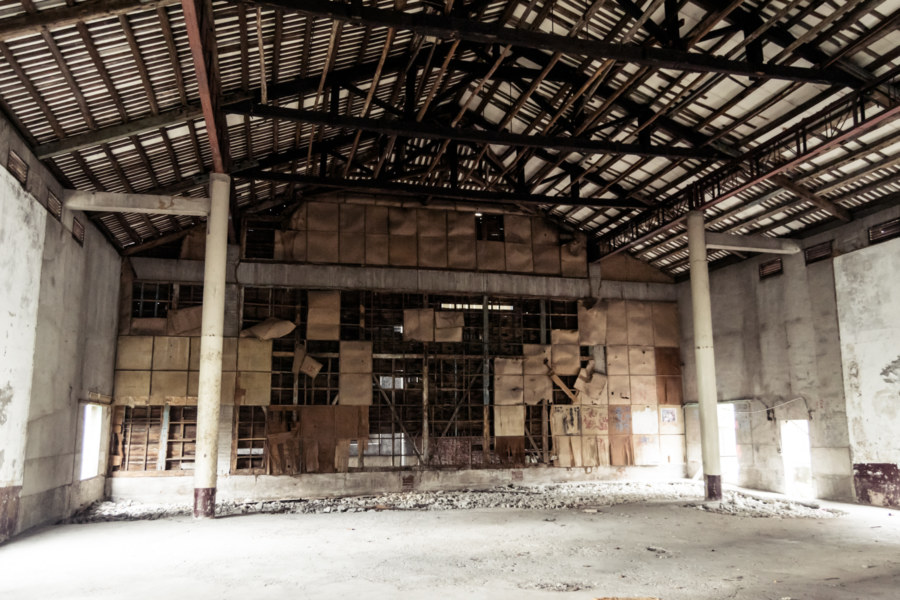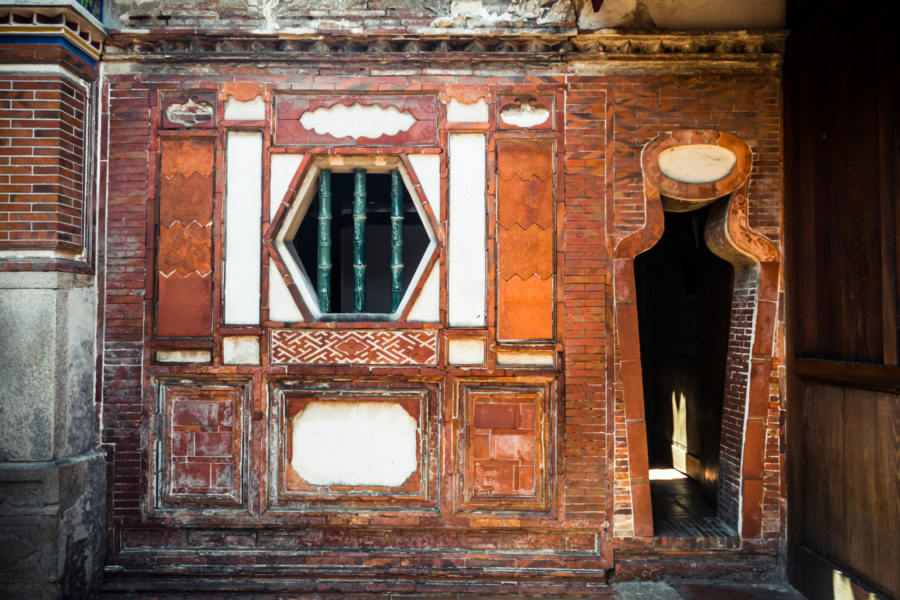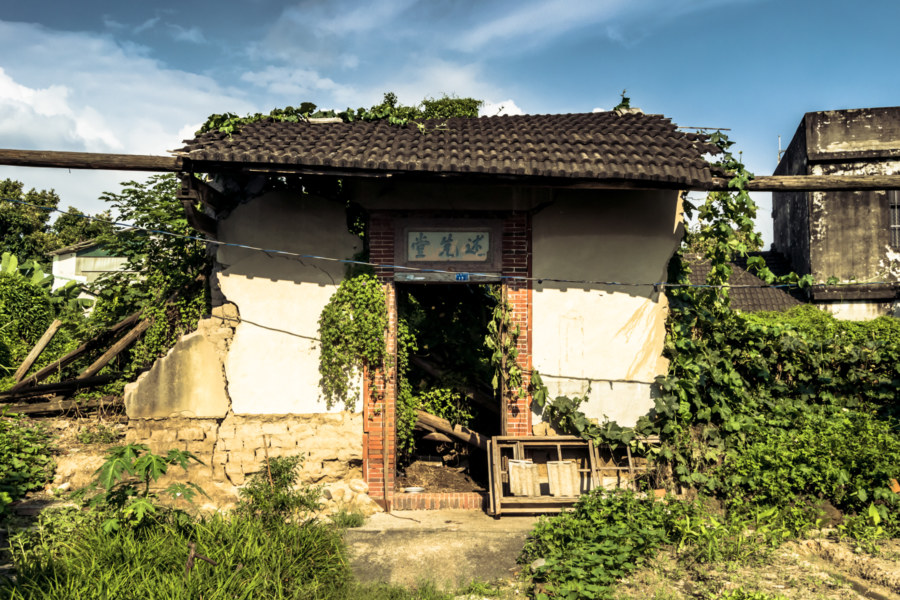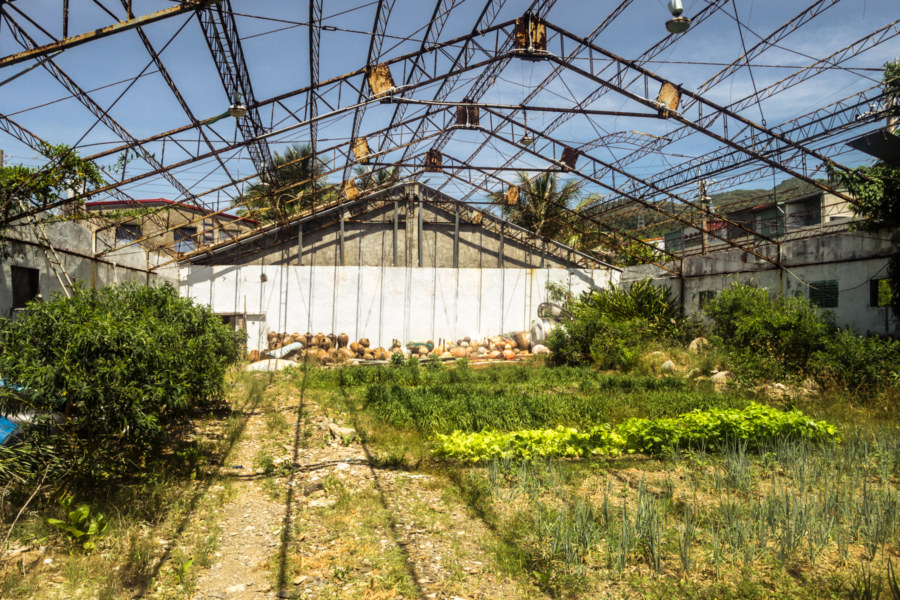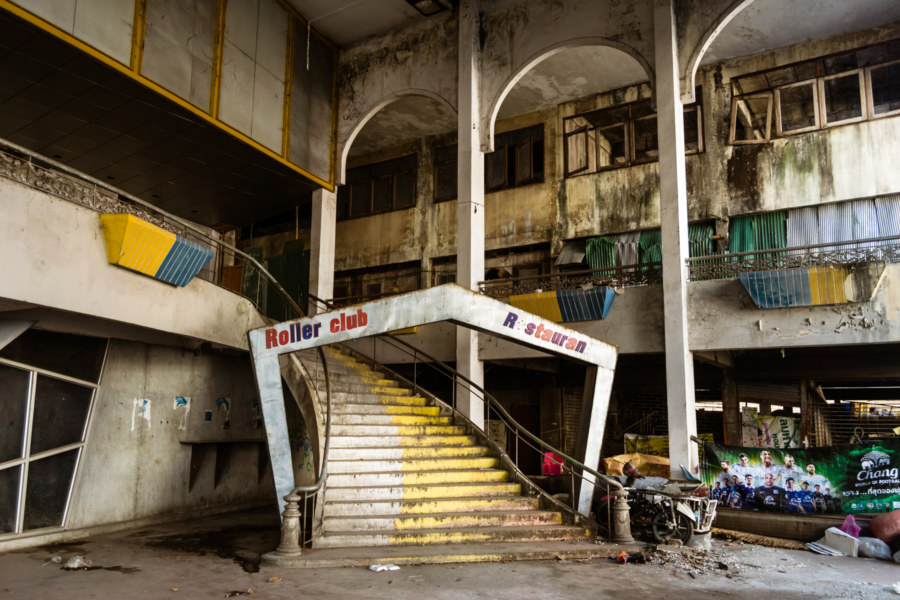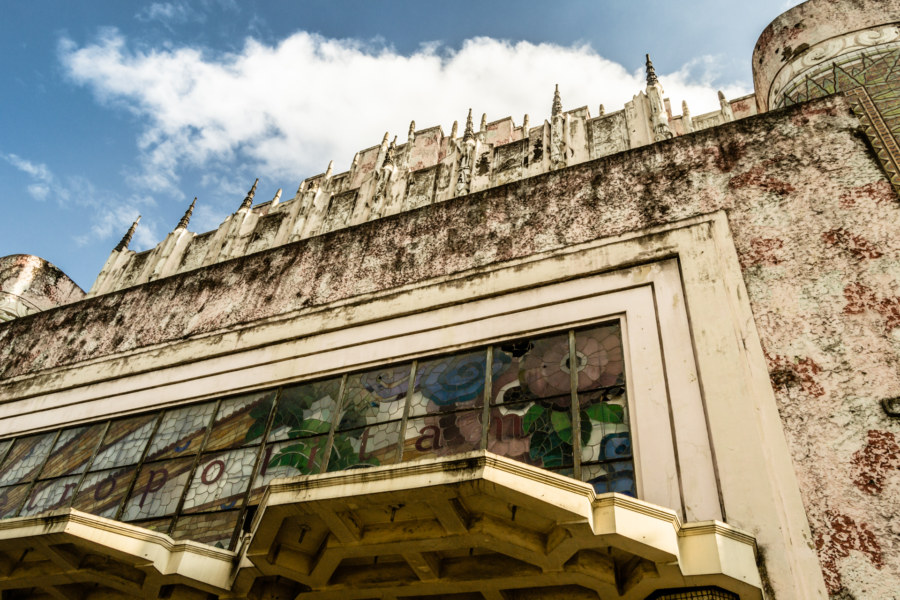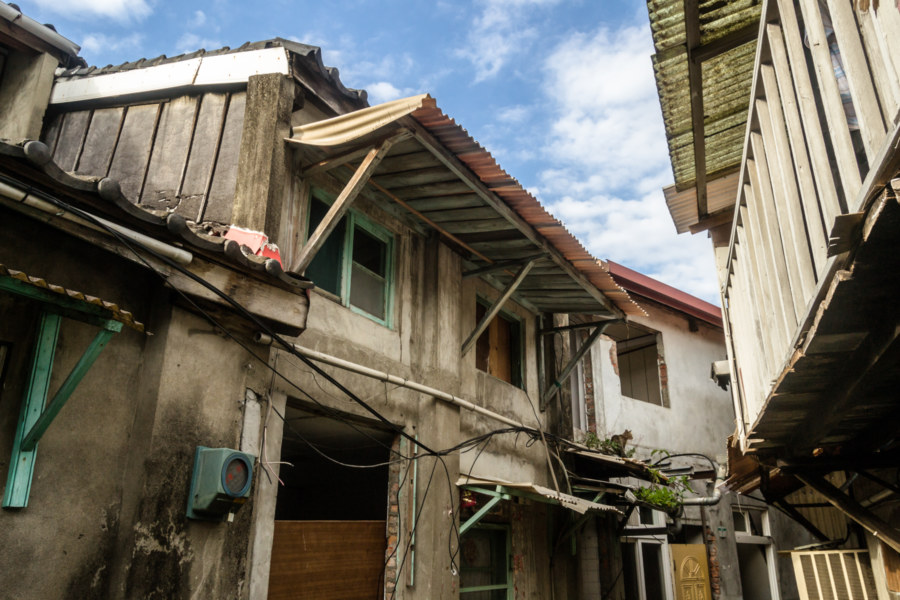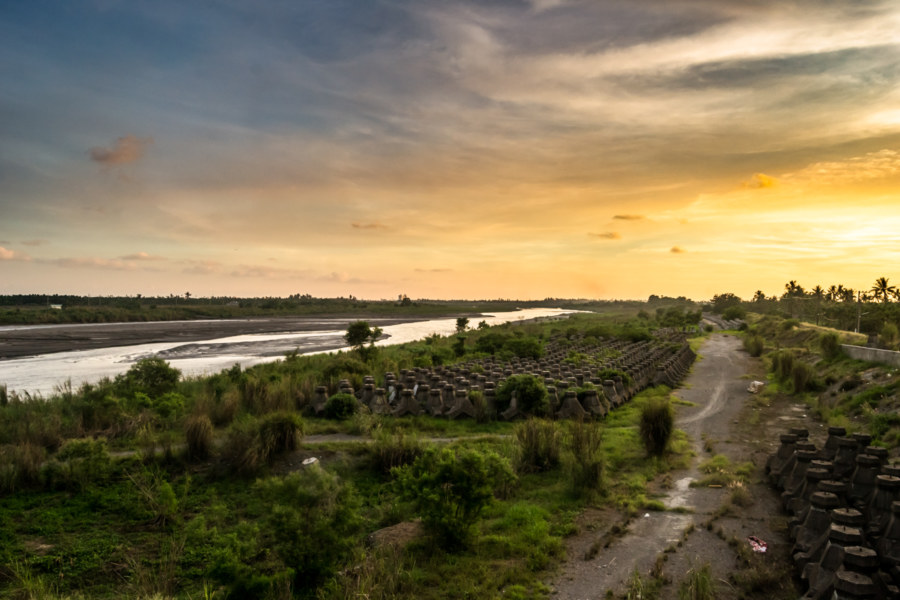Despite living in Changhua City for half a year I never paid much attention to the clothing store across the street from the historic Confucius Temple 彰化孔子廟. At that time my Chinese abilities were rudimentary and I wasn’t really aware of what kinds of buildings to watch for while navigating the variegated urban landscapes of Taiwan. Only after encountering Datong Theater 大同戲院 in Taitung City did I become fascinated by the rise and fall of Taiwanese cinema. Since then I have mapped the locations of more than a hundred vintage theaters and documented many of their fates. Most end up abandoned or destroyed—but Yíngōng Theater 銀宮戲院 earned a new lease on life after it was purchased by NET, a Taiwanese fashion retailer.
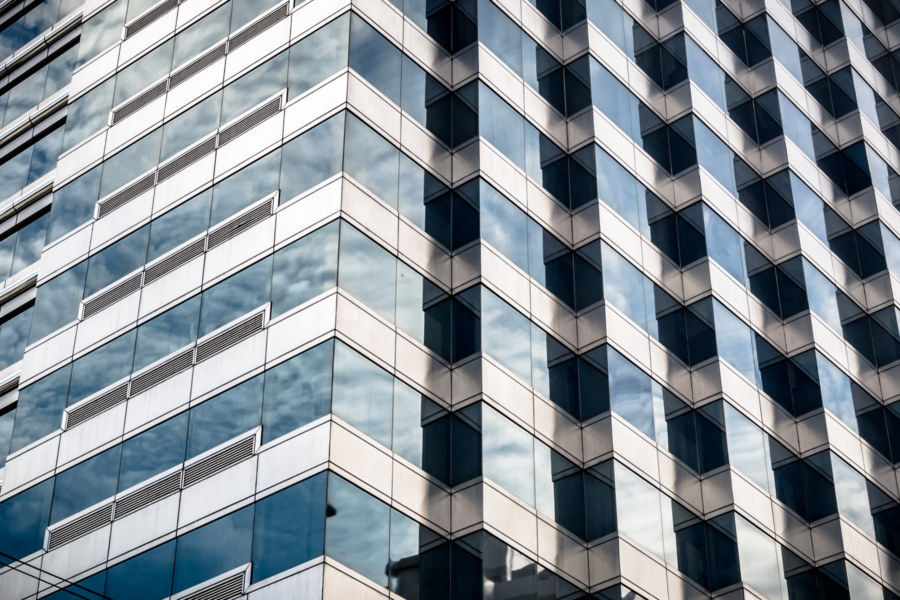
Structures fit for habitation and use. See also: urbanism, commercial, industrial, residential.
Subterms
Adjacent Terms
Xinpu Xinxing Theater 新埔新興戲院
Recently I visited Xinpu, a small Hakka town in the hills of Hsinchu, Taiwan, alongside fellow photographer and blogger Josh Ellis. I was curious to confirm reports of a historic theater along the former Entertainment Street 娛樂街 but the location in my notes was occupied by a construction site. Forging on, we continued down the road and were soon rewarded by the sight of something that I wasn’t expecting: Xīnxīng Theater 新興戲院. In hindsight it wouldn’t be an “entertainment street” without more than one cinema, would it?
Huangxi Academy 磺溪書院
Built in 1887, Huángxī Academy 磺溪書院 is one of dozens of Qing dynasty era schools of classical studies in Taiwan. Located in Dadu, a small town in southwestern Taichung, it provides a window into a time when scholarship was more closely interwoven with spirituality. Apart from classrooms and areas for quiet study the academy also has an altar to the Five Wénchāng 五文昌: Kuí Xīng 魁星, Zhū Xī 朱熹, Guān Yǔ 關羽, Lǚ Dòngbīn 呂洞賓, and, of course, Wénchāng 文昌 himself. Collectively these Taoist gods represent classical Chinese culture and several are commonly venerated by students prior to writing exams. Structurally the academy follows a plan similar to a traditional Taiwanese courtyard home or sanheyuan with the addition of a large gatehouse and pavilion.
Shuidui Settlement 水碓聚落
Taichung is undergoing a massive transformation as vast tracts of rural-industrial sprawl are cleared to make way for new developments around the high-speed rail station 高鐵台中站 and the future Taichung Metro system, particularly in Beitun, Nantun, and Wuri. Google’s satellite maps are out of sync with the streets, many of which are so new that they appear only as ghostly lines coursing through the former rice paddies. With large parts of the urban periphery slated for wholesale demolition and renewal many grassroots organizations have formed to preserve cultural assets found in these doomed territories—as was the case with the Shuinan Tobacco Barn 水湳菸樓. Today I chanced upon another example: Shuǐduì Jùluò 水碓聚落, a rare 17th century Hakka settlement in Nantun with an ambiguous future.
Dawu Theater 大武戲院
I stumbled upon the remains of Dawu Theater 大武戲院 while on a bicycle tour of southern Taiwan in 2015. Located in the small town of Dawu, it was one of approximately 36 theaters operating in Taitung in the cinematic heyday of the 1960s and 70s, all of which are now abandoned or destroyed. This particular theater was in business from 1968 to 1983 and allegedly accommodated as many as 1,200 patrons, earning it the title of nánbàtiān 南霸天, or “southern tyrant”, for how it dominated the industry in the southernmost part of the county. Hardly anything remains after three decades of exposure that would identify Dawu Theater apart from a small sign in the antechamber.
Space Roller, Chiang Mai
Space Roller is an abandoned rollerskating rink not far from the Arcade Bus Station on the northeastern outskirts of Chiang Mai, Thailand. I dropped in to check it out in January 2016 after reading about it online, possibly here, and was impressed with the scale of the place. It is big, taking up the better part of a city block, with several unfinished add-ons extending into the urban wilderness on either side. Unfortunately there isn’t a lot of credible information about Space Roller in English so this post will consist primarily of photos of what I found in about half an hour of slinking through the shadows.
Manila Metropolitan Theater
Manila Metropolitan Theater, or simply the Met, is the largest and most famous Art Deco theater in Manila. Designed by the prolific Juan M. Arellano, the Met officially opened in 1931 and soon became a focal point for Manila’s high society. Like most of the rest of the city Manila Metropolitan Theater was heavily damaged in the Battle of Manila. The post-war era wasn’t kind to the Met; it fell into disrepute for decades until restoration efforts were undertaken in the late 1970s. Ownership disputes led to another phase of neglect in the mid-1990s and today it remains abandoned despite occasional efforts at rehabilitation.
Fushui Village 富水里
Fùshuǐ Village (富水里) is located on a small parcel of land at the southern edge of Zhongzheng, Taipei, just to the west of Gōnggǔan Station (公館站). Technically the village contains the now-abandoned Jiahe New Village (嘉禾新村), a military dependents’ village previously profiled on this blog, but most common uses of the name refer to the illegal settlement running along Yǒngchūn Street (永春街), just inside the riverside wall. This settlement of around a hundred homes, like nearby Treasure Hill (寶藏巖), was supposed to be destroyed around the turn of the millennium, but plans have gone awry, and its fate remains unclear.
Yonghe Theater 永和大戲院
Yonghe Theater 永和大戲院 is one of dozens of derelict movie theaters in Greater Taipei. Like hundreds of other theaters all around Taiwan this one went out of business in the early years of the new millennium due to changing consumer habits, a topic already discussed at length in previous explorations of places like Datong Theater 大同戲院 in Taitung City and Xinming Theater 新明戲院 in Zhongli. Whereas theaters in the rest of the country are often left to the elements, sky-high property values in the Taipei area strongly incentivize owners to do something with these decaying buildings. In this instance the front of the old theater was been converted for the use of into a 7-Eleven convenience store and an Italian restaurant by the name of Lan De Pasta House 嵐迪義大利麵. I wonder whether patrons of these establishments realize what looms overhead?
Southern Taiwan Ride 2015: Pingtung City to Fangliao
After spending a day riding around Pingtung City I was ready to hit the road again. With no specific destination in mind—only an intention to head in the direction of Hengchun, far to the south—I checked out of the vintage homestay I lodged at the previous night, stopped at Eske Place Coffee House for a delicious and healthy vegetarian breakfast, changed into cycling wear, and exited the city to the east. I knew almost nothing about where I was headed or what I might see on the third day of my southern Taiwan ride in 2015. I only had one stop planned in advance: a hospital in Chaozhou rumoured to be abandoned. I didn’t know it at the time but I would spend almost the entire day riding through the historic Hakka belt of Pingtung.
